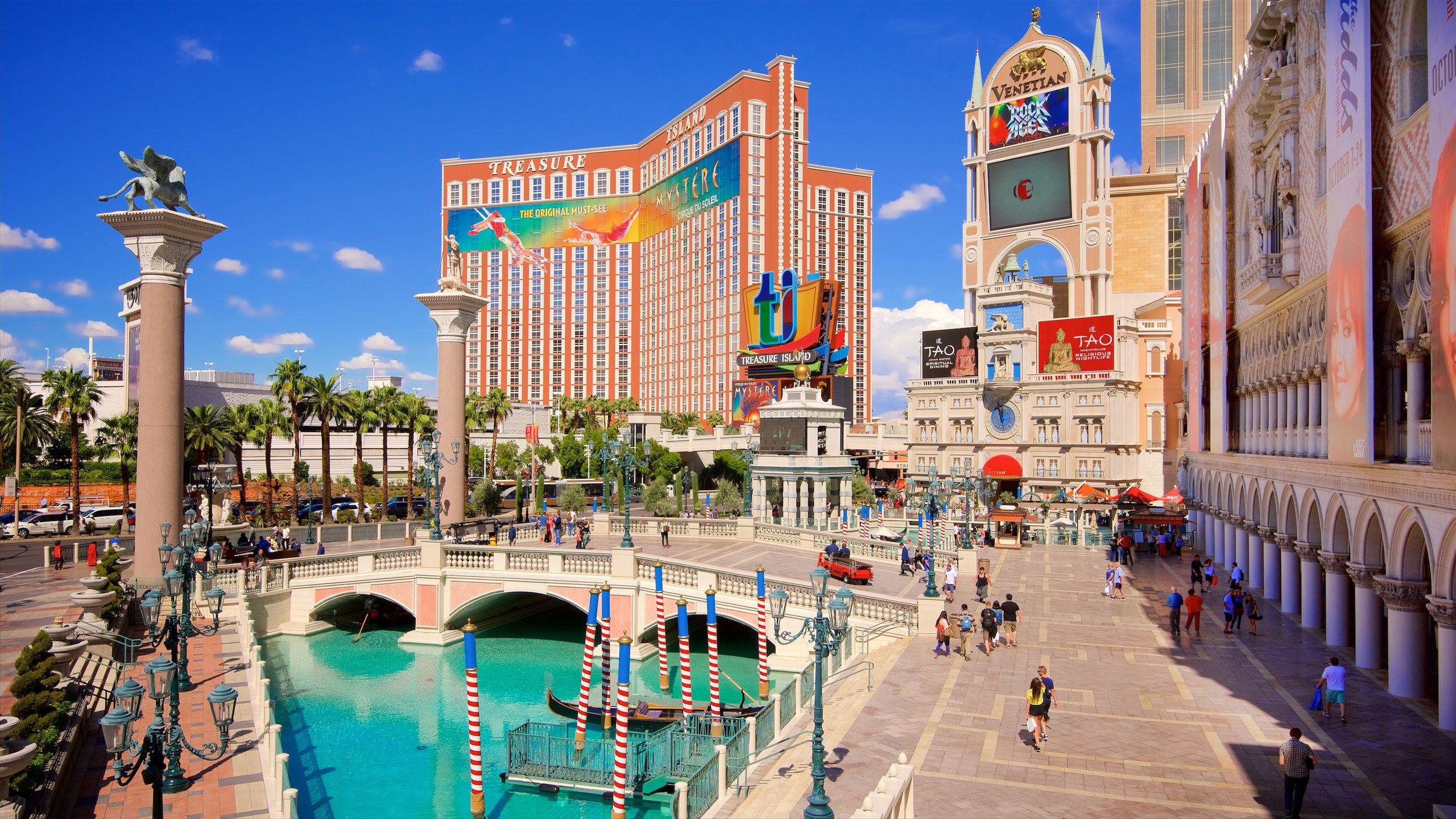The Impact of Tourism on Las Vegas Home Sales: A Mirage or Reality?
Las Vegas, a dazzling oasis in the Nevada desert, is synonymous with glitz, glamour, and an indefatigable energy that beckons millions of visitors each year. As tourists flock to its iconic Strip, indulging in world-class entertainment, storied casinos, and renowned dining experiences, they also shape the intricacies of the local real estate market. But what happens when the lights dim and the crowds disperse? Does the allure of the Las Vegas skyline contribute to a booming housing market, or does it create a precarious illusion of demand, vulnerable to the fluctuations of travel trends? In this article, we delve into the nuanced relationship between tourism and home sales in the Entertainment Capital of the World, exploring how the influx of visitors has left an indelible mark on the residential landscape. Join us as we navigate the intersection of leisure and living in a city that thrives on the promise of excitement—but also faces the reality of its transient nature.
Exploring the Connection Between Tourism Trends and Housing Demand in Las Vegas
Las Vegas, known for its vibrant entertainment scene and hospitality industry, has witnessed a robust correlation between tourism trends and housing demand over the years. As the city continually attracts millions of visitors annually, the influx of tourists subsequently elevates the demand for housing. Investors and homebuyers alike are drawn to the potential for rental income from vacation properties or short-term rentals, further increasing the competition in the real estate market. With major events, conventions, and festivals consistently scheduled, the ability to capitalize on tourism isn’t just a luxury for homeowners, it’s becoming a necessity for many.
Additionally, the shift in tourism dynamics—highlighted by emerging preferences for experiential travel and luxury accommodations—has instigated unique real estate opportunities in Las Vegas. Here are several key factors depicting how tourism influences housing demand:
- Increased Investor Interest: Tourists often seek short-term rentals, prompting investors to purchase residential properties.
- Higher Property Values: Neighbourhoods popular with visitors often see a rise in property values due to high demand.
- Development of Luxury Housing: The return of affluent tourists has led to more luxury housing developments catering to high-end buyers.
This intertwining of tourism and housing demand requires potential buyers and investors to remain vigilant, as shifts in tourist preferences can result in rapid changes across the real estate landscape.

Understanding the Influence of Seasonal Visitors on Local Real Estate Markets
In the heart of the desert, Las Vegas thrives not just on entertainment but also on the influx of seasonal visitors whose impact ripples through the real estate market. As the lights of the Strip beckon tourists year-round, local home sales experience fluctuations that echo the rhythm of tourist seasons. This dynamic is influenced by a combination of factors, such as the demand for vacation rentals and second homes, which sees peaks during holidays and major events. Homebuyers often capitalize on lower inventory levels and competitive pricing during off-peak months, while sellers may find themselves in a robust market as rental investors seek properties during peak tourism periods.
The impact of tourism on local real estate can be distilled into a few key aspects:
- Increasing Rental Demand: The steady stream of tourists boosts demand for short-term rentals, prompting property owners to invest in homes that can generate income.
- Price Appreciation: As more visitors dream of owning a piece of the Vegas lifestyle, property values often rise, leading to increased equity for homeowners.
- Supply and Demand Fluctuations: Seasonal peaks can create a temporary shortage of available homes, inflating prices and shortening the time on market.
The table below showcases a comparison of seasonal sales trends in Las Vegas, illustrating the correlation between tourism spikes and real estate activity:
| Season | Tourist Visits (Million) | Average Home Sales Price |
|---|---|---|
| Winter | 5.2 | $350,000 |
| Spring | 7.0 | $375,000 |
| Summer | 8.5 | $400,000 |
| Fall | 6.0 | $360,000 |

Navigating Property Investment Opportunities Amidst a Booming Tourism Sector
With an influx of tourists flocking to Las Vegas, the demand for rental properties has surged, creating a favorable landscape for property investors. Short-term rentals are especially lucrative, as many visitors seek unique accommodations that provide a local experience. Consider the advantages of capitalizing on this trend:
- High occupancy rates: Tourist hotspots often see occupancy rates exceeding 70%, ensuring a consistent cash flow.
- Increased property value: Properties in prime locations are appreciating rapidly, making them valuable assets for long-term investment.
- Diverse investment options: From luxury condos to cozy single-family homes, there are numerous opportunities to explore.
However, entering the property market in such a dynamic environment requires careful consideration of various elements that can impact your investment. Understanding market trends, zoning regulations, and local competition is essential. Use the table below to assess key factors influencing Las Vegas properties amidst the tourism boom:
| Factor | Impact on Investment |
|---|---|
| Seasonal fluctuations | Higher rental prices during peak seasons; strategize pricing strategies. |
| Local regulations | Compliance with rental laws to avoid fines and maintain your property’s reputation. |
| Market research | Analyzing competitor rates to position your rental competitively. |

Strategies for Homebuyers and Investors in a Tourism-Driven Market
In a market influenced significantly by tourism, homebuyers and investors can adopt a variety of strategic approaches to maximize their opportunities. Consider focusing on mixed-use properties that appeal to both tourists and locals, such as those located near entertainment hubs or popular attractions. This can lead to better rental prospects and increased property value over time. Remember to explore neighborhoods that are experiencing revitalization; often, these areas provide the best return on investment as they attract more visitors and residents alike. Additionally, leveraging technology in property search can help identify prime locations before they become widely recognized.
Investors should also pay attention to seasonal trends in tourism when determining the optimal time to buy. For example, buying in off-peak seasons can allow for better pricing on properties that will be rental-ready when tourism surges. Consider the following strategies:
- Market Analysis: Regularly review tourism statistics and trends that impact real estate.
- Networking: Connect with local tourism boards and property management companies to gain insights.
- Long-Term Rentals: Evaluate opportunities for long-term rentals, as stability in occupancy can be favorable during lower tourist seasons.
Q&A
Q&A: The Impact of Tourism on Las Vegas Home Sales
Q1: How does tourism affect the housing market in Las Vegas?
A1: Tourism significantly influences the Las Vegas housing market primarily through demand fluctuations. As the city attracts millions of visitors annually, the heightened interest can drive up both short-term rental investments and long-term housing needs. The interplay between transient visitors seeking short-term stays and a growing population of new residents shapes the dynamics of home sales.
Q2: Are there specific tourist trends currently impacting home sales?
A2: Indeed! Recent trends like the surge in remote work have led to a rise in families relocating from other states seeking a balance between work-life and leisure. This influx boosts demand for residential properties, while short-term rental options continue to attract investors capitalizing on the city’s tourism appeal.
Q3: What role do short-term rentals play in the market?
A3: Short-term rentals, like those listed on platforms such as Airbnb, are both a boon and a challenge. They provide property owners with significant income potential and cater to the burgeoning tourist crowd. However, they can also reduce the availability of homes for traditional buyers, which may lead to increased home prices and rental rates in certain neighborhoods.
Q4: How do seasonal visitor patterns influence home sales?
A4: Las Vegas experiences distinct seasonal tourism spikes, particularly during major events like conventions and holidays. These fluctuations can create urgency among buyers looking to capitalize on the tourist influx by either purchasing homes for rental income or making timely decisions in a fast-paced market. Sellers often adjust their strategies to align with these patterns, making spring and winter key selling seasons.
Q5: Are there any regulatory challenges linked to tourism and home sales in Las Vegas?
A5: Yes, the rise of short-term rentals has prompted policymakers to introduce regulations aimed at balancing tourist accommodations with residential community needs. These regulations can impact home sales by changing the landscape of permissible rental operations, thereby influencing investors’ decisions about buying properties intended for short-term leasing.
Q6: What should prospective homebuyers in Las Vegas consider in light of tourism’s impact?
A6: Buyers should assess market trends, including the presence of short-term rental properties in their desired neighborhoods, and consider how tourism may affect their quality of life. Understanding local zoning laws and market dynamics can empower buyers to make informed decisions that align with their long-term goals, whether they seek investment opportunities or a primary residence.
Q7: Can we expect tourism to continue influencing Las Vegas home sales in the future?
A7: Absolutely. As Las Vegas continues to innovate and invest in its tourism sector, the impact on home sales is likely to persist. With developments in entertainment, dining, and hospitality, the city remains an attractive destination for visitors and potential residents alike, ensuring that the interaction between tourism and the housing market will remain a pivotal topic for years to come.
Wrapping Up
In the shimmering backdrop of the Las Vegas Strip, where the allure of entertainment and the promise of fortune loom large, the impact of tourism on the local housing market cannot be overlooked. As the influx of visitors fuels a distinct demand for both short-term rentals and long-term residences, it reshapes the very fabric of the community. While the challenges of affordability and availability may cast shadows on the vibrant housing landscape, the opportunities for investment and growth sparkle just as brightly.
the intricate dance between tourism and home sales in Las Vegas creates a dynamic that is both complex and promising. As the city continues to evolve, so too will its housing market, morphing in response to the ebbs and flows of visitor activity. For potential buyers, investors, and policymakers alike, understanding this relationship is crucial in navigating the ever-changing terrain of this desert oasis. Las Vegas stands as a testament to resilience and reinvention, inviting all to explore the myriad possibilities that lie ahead in its real estate journey.


